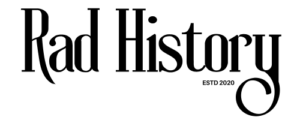The German battleship Gneisenau, a formidable warship of the Kriegsmarine, found itself in a vulnerable position during World War II. In 1940, while operating in the North Atlantic, the vessel fell victim to an attack by the British submarine HMS Clyde.
The encounter left the Gneisenau with significant damage to her bow, necessitating repairs in drydock at Kiel. Images from this period provide a rare glimpse into the effects of submarine warfare on even the mightiest surface vessels of the era. The visible damage serves as a testament to the effectiveness of undersea attacks and the challenges faced by naval powers during the conflict.
This incident highlights the ongoing struggle for naval supremacy in the early years of World War II. It demonstrates the vulnerabilities of large surface ships to submarine tactics and underscores the importance of naval repair facilities in maintaining a fleet’s operational readiness.
Historical Context
The Gneisenau played a pivotal role in Nazi Germany’s naval strategy during World War II. Its involvement in key operations and encounters with Allied forces shaped the early stages of the conflict at sea.
Design and Specifications of Gneisenau
The Gneisenau was a Scharnhorst-class battleship, launched in 1936 and commissioned in 1938. It measured 234.9 meters in length and had a displacement of 38,100 tons. The ship’s main armament consisted of nine 28 cm (11-inch) guns in three triple turrets.
Gneisenau’s design emphasized speed and firepower. It could reach speeds up to 31.5 knots, making it one of the fastest battleships of its time. The vessel’s armor belt was 350 mm thick, providing substantial protection against enemy fire.
The ship’s aircraft facilities included a catapult and hangars for four Arado Ar 196 seaplanes, enhancing its reconnaissance capabilities.
Strategic Importance in 1940
In 1940, the Gneisenau was a key asset in Germany’s naval strategy. It conducted commerce raiding operations in the Atlantic, threatening Allied shipping lanes. The ship’s speed and firepower made it a formidable opponent for convoy escorts.
Gneisenau’s presence forced the Royal Navy to allocate significant resources to hunt and neutralize it. This diversion of Allied naval assets aided other German naval operations and U-boat campaigns.
The battleship’s ability to outrun heavier ships and outgun lighter ones made it particularly effective in hit-and-run tactics. Its operations contributed to the disruption of Allied supply lines during the critical early stages of World War II.
The Torpedo Attack
HMS Clyde’s daring assault on the Gneisenau in 1940 exposed the battleship’s vulnerability while in drydock. The attack resulted in significant damage to the vessel’s bow, highlighting the risks faced by large warships even in supposedly secure harbors.
HMS Clyde’s Mission
HMS Clyde, a British submarine, was tasked with penetrating the heavily defended Kiel harbor. The mission aimed to strike at German naval assets, with the Gneisenau presenting a prime target. On June 20, 1940, HMS Clyde maneuvered through treacherous waters, evading detection from German patrols.
At 0010 hours, the submarine fired a spread of torpedoes at the battleship. One torpedo found its mark, striking the Gneisenau’s bow. The successful attack demonstrated the skill and determination of the British submariners.
Gneisenau’s Vulnerability
Despite its formidable armament and armor, the Gneisenau proved susceptible to attack while in drydock. The battleship’s stationary position made it an easier target for the British submarine. The torpedo impact caused extensive damage to the vessel’s bow structure.
Repair crews rushed to assess and contain the damage. The attack necessitated significant reconstruction work, delaying the Gneisenau’s return to active service. This incident underscored the importance of enhanced harbor defenses and the ongoing threat posed by enemy submarines, even in seemingly secure ports.
Damage Assessment
The torpedo strike on Gneisenau’s bow caused significant structural damage and operational limitations. Naval engineers conducted a thorough evaluation to determine repair requirements and impacts on the ship’s capabilities.
Extent of Bow Damage
The torpedo hit damaged approximately 10-15 meters of Gneisenau’s bow structure. It created a large hole below the waterline, flooding forward compartments. The blast buckled armor plates and bent internal support beams.
Watertight bulkheads prevented more extensive flooding, but the ship took on several hundred tons of seawater. This affected her trim and seakeeping abilities.
Damage to bow sonar equipment and forward gun mounts temporarily reduced Gneisenau’s offensive and defensive capabilities. Preliminary assessments estimated repairs would take 3-4 months in drydock.
Impact on Gneisenau’s Operations
The torpedo damage forced Gneisenau to withdraw from active operations in the North Atlantic. Her reduced speed and compromised seaworthiness made her vulnerable to further attacks.
The German Navy had to adjust its commerce raiding strategy with one of its most powerful surface ships out of action. This limited their ability to threaten Allied shipping lanes.
Extensive repairs in drydock meant Gneisenau would miss participating in several planned operations. The delay gave Allied forces time to improve their defenses and gather intelligence on German naval movements.
Repairs and Aftermath
The Gneisenau underwent extensive repairs at Kiel following the torpedo attack. These efforts aimed to restore the battleship’s combat capabilities and return it to active service.
Drydock Repair Process
The Gneisenau entered drydock at Kiel on April 30, 1940. Workers focused on repairing the damaged bow section, which had sustained significant structural damage from the torpedo hit. The repair process involved cutting away the damaged plating and frames.
New steel sections were fabricated and welded into place to reconstruct the bow. Shipyard crews worked around the clock to complete the repairs as quickly as possible.
The repair efforts also included inspections and maintenance of other ship systems to ensure full operational readiness. This encompassed checks on engines, weapons, and electronics.
Gneisenau’s Return to Service
The Gneisenau completed its repairs and left drydock on July 21, 1940, less than three months after the attack. The battleship underwent sea trials to verify the effectiveness of the repairs and test its systems.
Following successful trials, the Gneisenau rejoined the German fleet on August 23, 1940. It resumed its role as a key capital ship in the Kriegsmarine, participating in commerce raiding operations in the Atlantic.
The swift repair and return to service demonstrated the German Navy’s ability to quickly recover from battle damage. This capability proved crucial for maintaining naval strength during the ongoing war.
Broader Implications
The torpedoing of the Gneisenau exposed vulnerabilities in German naval defenses and sparked reactions across Europe. This incident had far-reaching consequences for military strategy and international relations.
Military Learnings
The attack on Gneisenau revealed critical flaws in German naval protection measures. It highlighted the effectiveness of submarine warfare against capital ships, even in supposedly secure harbors. Naval commanders on both sides studied the incident closely.
The German navy implemented stricter anti-submarine defenses around major ports. They increased patrols and installed more extensive underwater detection systems. British submarine tactics were refined based on HMS Clyde’s success.
This event also influenced battleship design. Naval architects placed greater emphasis on compartmentalization and damage control systems. The goal was to improve a ship’s ability to survive torpedo hits and remain operational.
Political Reactions
The torpedoing of Gneisenau had significant political repercussions. It boosted British morale and demonstrated the Royal Navy’s ability to strike at the heart of German naval power. Prime Minister Churchill used the incident in speeches to rally public support.
In Germany, the attack raised questions about naval preparedness. Some military leaders faced criticism for the perceived security lapse. Nazi propaganda downplayed the incident to maintain public confidence.
The event strained diplomatic relations between Germany and neutral Norway. German officials suspected Norwegian complicity in allowing British submarines to operate in their waters. This heightened tensions and contributed to Germany’s decision to invade Norway in April 1940.
References
- Kriegsmarine Archives (n.d.) – Scharnhorst-Class Battleships Overview Link
- Royal Navy History (n.d.) – HMS Clyde’s 1940 Attack on Gneisenau Link
- Imperial War Museum (n.d.) – The Role of German Battleships in WWII Link
- German Naval Records (n.d.) – Gneisenau’s Repairs at Kiel Link
- BBC History (n.d.) – Naval Warfare in WWII: The Impact of Submarine Attacks Link
- Military History Encyclopedia (n.d.) – The Strategic Importance of Gneisenau Link




